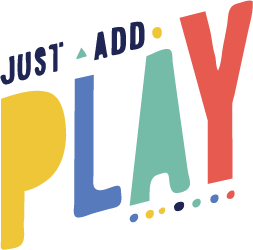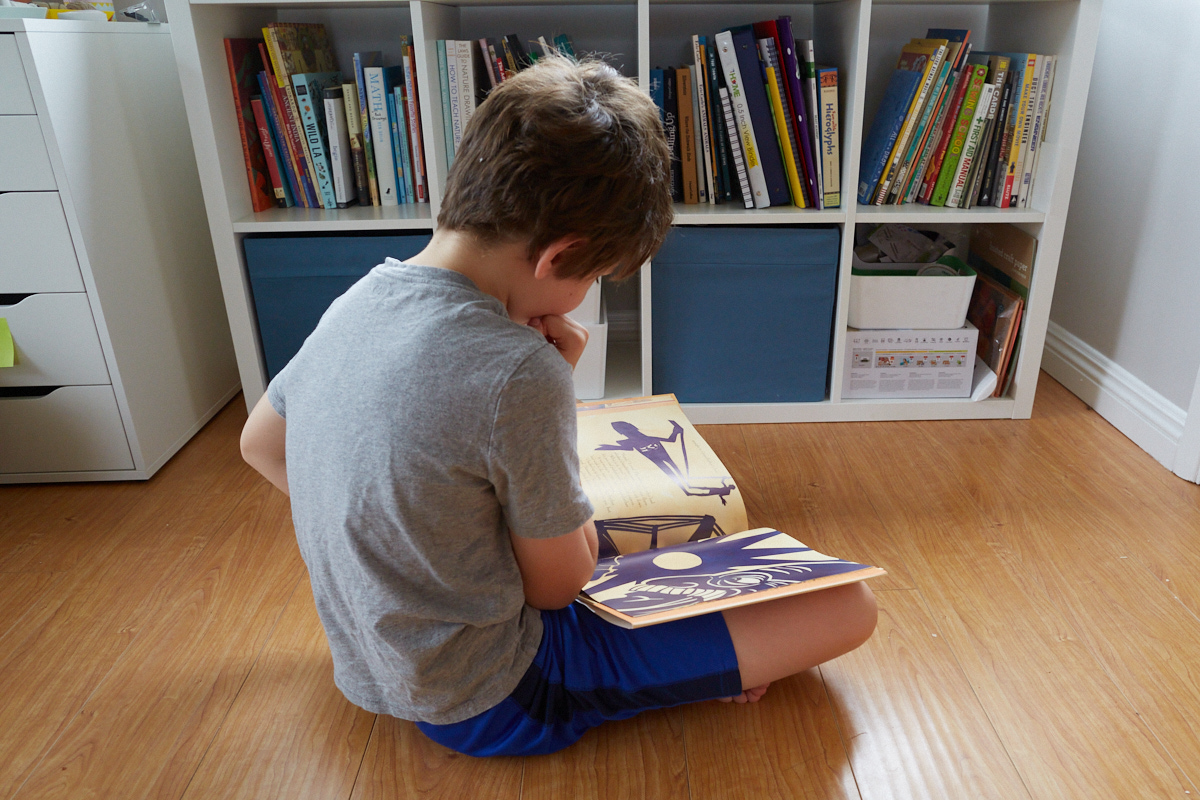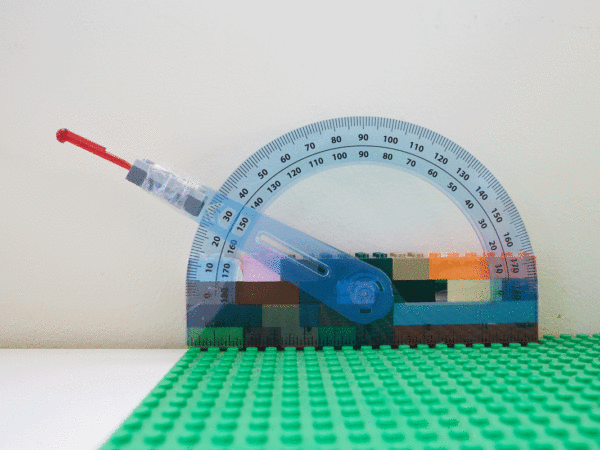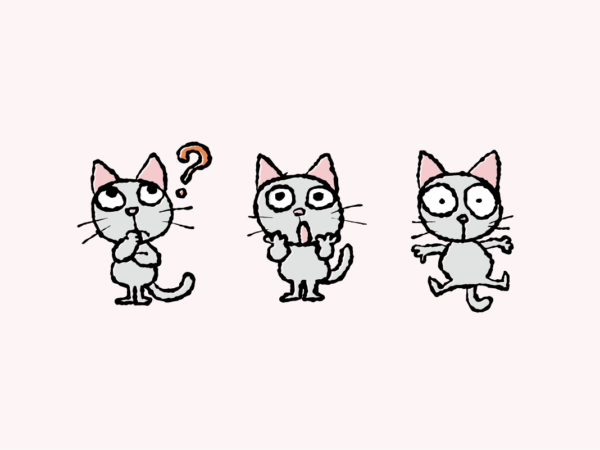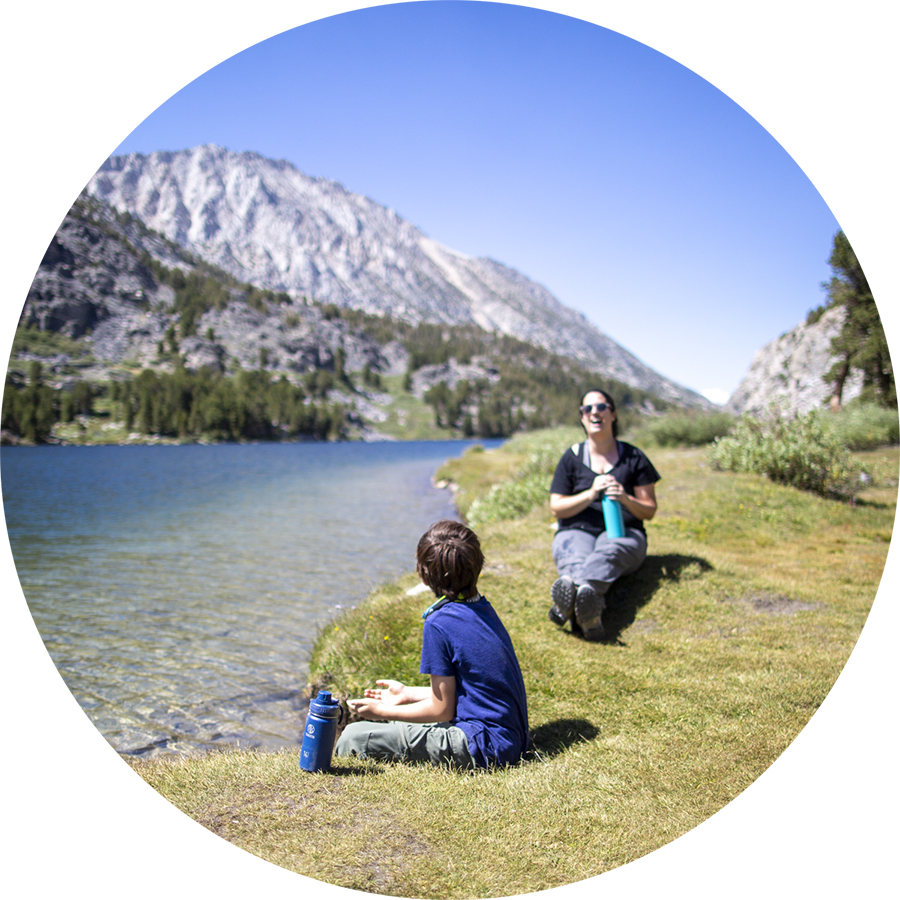If you’ve chosen homeschooling as the best option for your family during COVID, you’re likely straddling two worlds. On the one hand, you have to plan for your children to eventually go back to school. So there is real pressure to keep them on pace with their peers. You can’t quite fully embrace the flexible homeschooling world of child-led learning. Yet you don’t necessarily have a schedule conducive to researching, planning lessons, and full-time homeschooling your kids. This wasn’t your original plan, and you have a lot on your plate. It’s a tricky situation, for sure.
Fortunately, you don’t need to do everything they do in school. Below is a hybrid plan for tackling the four main academic subjects — language arts, math, history, and science– through a combination of structured curriculum and flexible homeschooling. The idea is to focus on skills that are necessary to “keep up,” while allowing for child-led exploration (and parent schedule-juggling) for other subjects.
Math and Language Arts
Since math and language arts skills are relatively cumulative, I recommend using a pre-packaged curriculum to help your kids stay at grade-level with their skills.
Math
Some popular homeschool curriculum packages include:
- RightStart Math (K and up): Hands-on and game-based, this is a great program for developing number sense and really understanding math concepts. I loved this for K-2nd grade, but found it a bit slow after that. This curriculum is a one-stop-shop for skills if you buy the bundle, which includes all the hands-on materials and manipulatives. Since this is a scripted curriculum, it doesn’t require a lot of planning. Be aware, however, that it is intended to be parent-facilitated, and does not lend itself to children working independently.
- Beast Academy (3rd grade and up): Rigorous and comic book based? Yep. It’s possible. Beast Academy is reading and workbook driven, but many of the worksheets are challenging puzzles and logic exercises. This curriculum really ensures that kids understand the nuances of math concepts and also have adequate skills practice. Depending on the child, this program could allow for independent work. However, be prepared to jump in if they get stuck — especially in the beginning when they’re getting used to the style of the questions.
- Singapore Math: This curriculum is mastery based and focuses on real understanding of math concepts and emphasizes mental math. It progresses instruction of individual concepts through concrete examples, illustrated examples, and then mathematical abstractions. In many ways, this approach is similar to RightStart, except that it is workbook-based (rather than manipulative and game-based). If your child’s temperament finds satisfaction in checking items off a list and moving through orderly structured workbook pages, this would be a great fit.
Note: While I recommend using a structured curriculum to make things easier, I don’t recommend using math textbooks. They aren’t written in a way that explains concepts to children. They are meant as a backdrop for teacher-led instruction in a classroom. Also, as we all know, they aren’t the most exciting read…
Math Enrichment
If you find that your child craves more than this curriculum, add in some enrichment projects, historical study of mathematics, or puzzles. This can all be explored through low-pressure play, and opted in or out of depending on your day. Check out some ideas in our math section here.
Language Arts
Your child should be reading, writing, and discussing ideas as much as possible. This will look vastly different at different ages and can take many forms. The beauty of language arts, though, is that it isn’t content specific. Your children can read and write about anything. Go with their interests!
For a wonderful, developmentally appropriate and enriching language arts experience, I highly recommend the Brave Writer curriculum. A quick read through the samples and curriculum on their website is enough to get you started. You can dive in more deeply once you’re rolling. There is no need to plan out your whole year.
History and Science
Right off the bat, let yourself completely off the hook for history and science. Seriously. Don’t plan a thing for these subjects. Generally speaking, these are not cumulative subjects in school. Missing 5th grade US History, for example, will not put your child at a disadvantage for studying ancient civilizations in school the following year. And because history is taught in cycles, your kids will encounter the same history topic again in a later year of schooling. The same applies to science. A child who misses the content of 5th grade biology will be just fine in 9th grade biology because all of the content is repeated!
Now, this doesn’t mean that your child won’t do any science or history this year. It just means that you don’t have to plan for it or structure it around school standards. It can be more organic and lower stress. Science and history lend themselves toward child-led projects. They are great for deeper, long-term explorations in which your child will develop critical thinking skills and direct their own learning. But again, you don’t need to plan these. You can just set aside some time for your children to do their own reading, research, or play-based exploration of the topics that interest them. It could be as simple as selecting a good documentary series, or finding some basic activity kits on a topic they would enjoy. Or it can be a more involved project that they direct.
Alternative Approach
The inverse of this general approach also works, and is closer to what we do with our family. You can create a history content block that integrates language arts skills, and a science content block that integrates math skills. In this way, you’re planning history and science, and exploring math and language arts through these topics. This has the advantage of increasing engagement, but requires more planning and is riskier in terms of skipping around in relation to school standards.
You know your children best. You know their strengths and their passions. The more you tap into their natural curiosity, the less work you’ll have to do with planning and motivation. They’ll be self-motivated and focused. Choose the approach and strategy that works best for you. Ultimately your children will be served best by pursuing their own interests. If you work strategically to focus on a smaller set of skills, you’ll be able to create time and space for your kids to use their time at home for independent research and projects. And you’ll have a more realistic plan of attack for staying sane while covid schooling!
